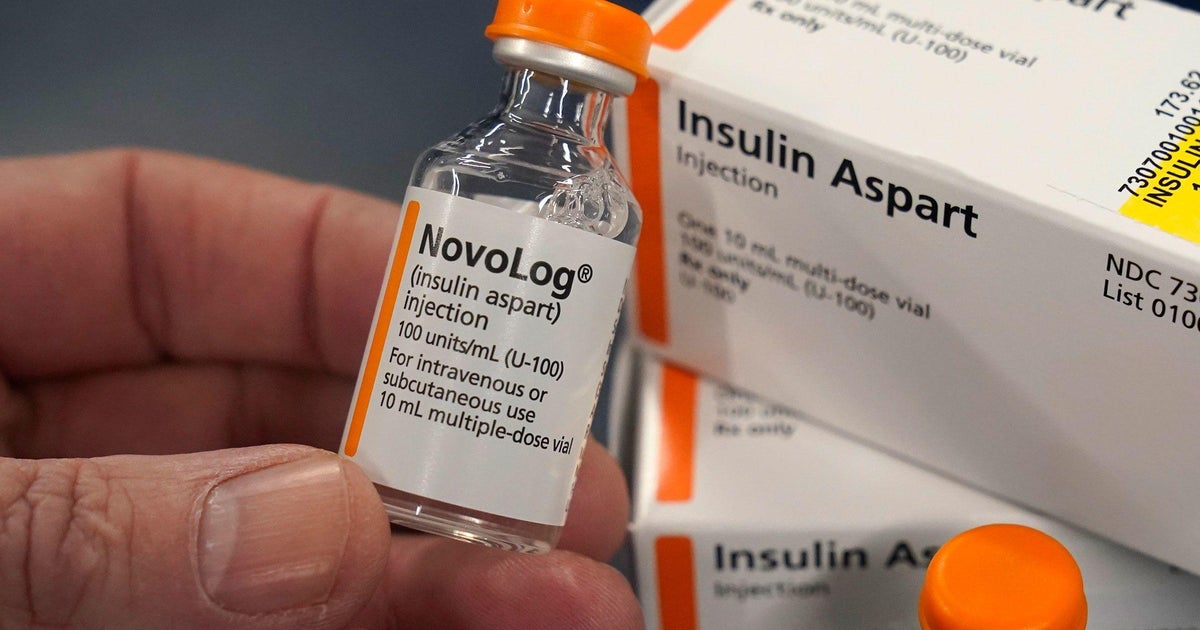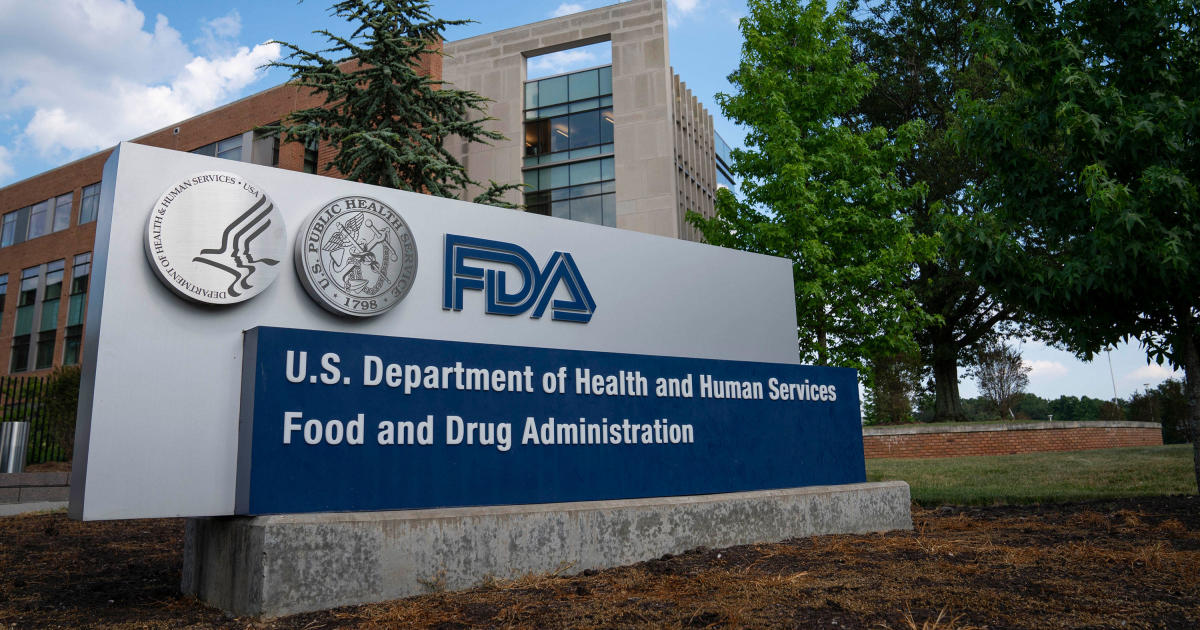CBS News
Drugmakers hiking prices for more than 700 medications, including Ozempic and Mounjaro

Pharmaceutical companies are hiking prices for more than 700 medications, including popular weight-loss drugs Ozempic and Mounjaro, industry research shows.
The average price increase at year start was about about 4.5%, the analysis from 46 Brooklyn found. That represents a slightly slower pace compared with the five prior years, when drug prices rose about 5% each year on average, the data shows.
Among the noteworthy increases are Ozempic and Mounjaro, two drugs that belong to a class of medications called GLP-1 agonists. While these drugs are designed to help diabetics regulate their blood sugar, they’ve also been found to be effective weight-loss drugs, prompting non-diabetics to seek out the drugs in order to slim down. As a result, these drugs have been in greater demand, leading to shortages.
The price of Ozempic, which is manufactured by Novo Nordisk, rose 3.5% to $984.29 for a month’s supply, while Eli Lilly’s Mounjaro rose 4.5% to about $1,000 for a month’s worth of the medication, the 46 Brooklyn data shows.
Eli Lilly didn’t immediately return a request for comment. In a statement to CBS MoneyWatch, Novo Nordisk said that it “increases the list price of some of our medicines each year in response to changes in the health care system, market conditions and the impact of inflation.”
Prices are increasing this year for many other widely used drugs:
- Autoimmune disease medication Enbrel rose 5%
- Pain medication Oxycontin rose 9%
- Blood thinner Plavix rose 4.7%
- Antidepressant Wellbutrin rose 9.9%
“Technically, most brand prescription drug list price increases occur in either January or July each year, but the greatest number take place in January (and thus, January gets all the attention),” 46 Brooklyn wrote in a blog post about the drug increases. “By our counts, since 2018, more than 60% of all brand drug list price increases that occur throughout the course of each year are implemented in the month of January.”
46 Brooklyn’s analysis may not reflect what a patient ultimately pays for a drug. Their analysis is based on the wholesale acquisition cost, which is the price that drugmakers charge to wholesalers that distribute the drugs to pharmacies. Patients may pay less due to insurance coverage as well as rebates and other discounts.
Novo Nordisk said its list price isn’t representative of what most insured patients pay out of pocket. “That’s because after we set the list price, we negotiate with the companies that pay for our medicines (called payers) to ensure our products remain on their formularies so patients have access to our medicines,” the company said. “These payers then work directly with health insurance companies to set prices and co-pay amounts.”
Where drug prices are dropping
Not all medications saw price hikes, with the analysis finding that about two dozen medications dropped sharply in price at year start, including some popular insulin products. The high cost of insulin has drawn attention from the Biden administration and health policy experts, with the Human Rights Watch terming its pricing in the U.S. as a human rights violation.
The decline in insulin prices comes after Medicare, the insurance program for people 65 and older, capped the monthly price of insulin at $35. That prompted some drugmakers to slash the cost of insulin for a broader group of patients. The price of Novo Nordisk insulin products, sold under the Novolog brand name, declined 75% compared with a year earlier, the analysis found.
Other medications that saw price cuts include:
- Erectile dysfunction drug Cialis dropped 19%
- Antidepressant Prozac declined 18%
- Chronic obstructive pulmonary disease medication Advair declined 22% to 60%, depending on the formulation
While the decreases impact a small number of drugs compared with the hundreds that saw price hikes, they are nevertheless “truly remarkable from a historical perspective,” 46 Brooklyn noted.
“This phenomenon is particularly noteworthy due to the nature of the drugs that underwent decreases, primarily comprising historically high-utilization products such as insulins, asthma/COPD inhalers, and central nervous system (CNS) drugs,” the group noted.
CBS News
A study to devise nutritional guidance just for you

It’s been said the best meals come from the heart, not from a recipe book. But at this USDA kitchen, there’s no pinch of this, dash of that, no dollops or smidgens of anything. Here, nutritionists in white coats painstakingly measure every single ingredient, down to the tenth of a gram.
Sheryn Stover is expected to eat every crumb of her pizza; any tiny morsels she does miss go back to the kitchen, where they’re scrutinized like evidence of some dietary crime.
Stover (or participant #8180, as she’s known) is one of some 10,000 volunteers enrolled in a $170 million nutrition study run by the National Institutes of Health. “At 78, not many people get to do studies that are going to affect a great amount of people, and I thought this was a great opportunity to do that,” she said.
CBS News
It’s called the Nutrition for Precision Health Study. “When I tell people about the study, the reaction usually is, ‘Oh, that’s so cool, can I do it?'” said coordinator Holly Nicastro.
She explained just what “precise” precisely means: “Precision nutrition means tailoring nutrition or dietary guidance to the individual.”
The government has long offered guidelines to help us eat better. In the 1940s we had the “Basic 7.” In the ’50s, the “Basic 4.” We’ve had the “Food Wheel,” the “Food Pyramid,” and currently, “My Plate.”
CBS News
They’re all well-intentioned, except they’re all based on averages – what works best for most people, most of the time. But according to Nicastro, there is no one best way to eat. “We know from virtually every nutrition study ever conducted, we have inner individual variability,” she said. “That means we have some people that are going to respond, and some people that aren’t. There’s no one-size-fits-all.”
The study’s participants, like Stover, are all being drawn from another NIH study program called All Of Us, a massive undertaking to create a database of at least a million people who are volunteering everything from their electronic health records to their DNA. It was from that All of Us research that Stover discovered she has the gene that makes some foods taste bitter, which could explain why she ate more of one kind of food than another.
Professor Sai Das, who oversees the study at Tufts University, says the goal of precision nutrition is to drill down even deeper into those individual differences. “We’re moving away from just saying everybody go do this, to being able to say, ‘Okay, if you have X, Y and Z characteristics, then you’re more likely to respond to a diet, and somebody else that has A, B and C characteristics will be responding to the diet differently,'” Das said.
It’s a big commitment for Stover, who is one of 150 people being paid to live at a handful of test sites around the country for six weeks – two weeks at a time. It’s so precise she can’t even go for a walk without a dietary chaperone. “Well, you could stop and buy candy … God forbid, you can’t do that!” she laughed.
While she’s here, everything from her resting metabolic rate, her body fat percentage, her bone mineral content, even the microbes in her gut (digested by a machine that essentially is a smart toilet paper reading device) are being analyzed for how hers may differ from someone else’s.
Nicastro said, “We really think that what’s going on in your poop is going to tell us a lot of information about your health and how you respond to food.”
CBS News
Stover says she doesn’t mind, except for the odd sounds the machine makes. While she is a live-in participant, thousands of others are participating from their homes, where electronic wearables track all kinds of health data, including special glasses that record everything they eat, activated when someone starts chewing. Artificial intelligence can then be used to determine not only which foods the person is eating, but how many calories are consumed.
This study is expected to be wrapped up by 2027, and because of it, we may indeed know not only to eat more fruits and vegetables, but what combination of foods is really best for us. The question that even Holly Nicastro can’t answer is, will we listen? “You can lead a horse to water; you can’t make them drink,” she said. “We can tailor the interventions all day. But one hypothesis I have is that if the guidance is tailored to the individual, it’s going to make that individual more likely to follow it, because this is for me, this was designed for me.”
For more info:
Story produced by Mark Hudspeth. Editor: Ed Givnish.
“Sunday Morning” 2024 “Food Issue” recipe index
Delicious menu suggestions from top chefs, cookbook authors, food writers, restaurateurs, and the editors of Food & Wine magazine.
CBS News
A new generation of shopping cart, with GPS and AI

Watch CBS News
Be the first to know
Get browser notifications for breaking news, live events, and exclusive reporting.
CBS News
“All hands on deck” for Idaho’s annual potato harvest

Watch CBS News
Be the first to know
Get browser notifications for breaking news, live events, and exclusive reporting.











